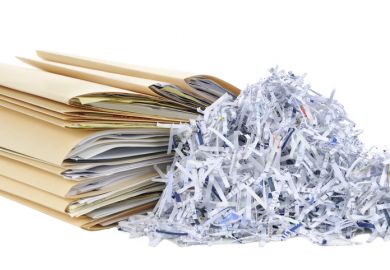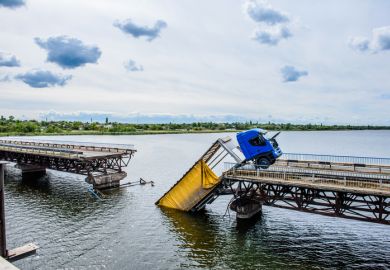An organisation established to help journals “get their houses in order” has published new guidelines to aid editors in decisions about article retractions.
Although the rate of retraction in scientific journals has increased roughly tenfold in the past two decades, many problematic papers are still thought to escape censure.
Now, the Committee on Publication Ethics (Cope), which represents 5,000 journal editors, has produced voluntary guidelines to address the issue.
The idea is to give clear guidance to editors about when and how to retract papers.
Liz Wager, chairwoman of Cope, said that journal editors had given the “strong impression that they really weren’t sure when they ought to use a retraction”.
On the one hand, some journals seem too reluctant to withdraw work.
“They would be faced with really clear evidence of misconduct and not retract,” Ms Wager said.
But on the other, there were occasional cases of editors who were “too gung-ho” or authors with “unrealistic expectations” who “demand a retraction when it is clearly inappropriate”, she said.
The guidelines state that retraction should usually be reserved “for publications that are so seriously flawed that their findings or conclusions should not be relied upon”.
They say the purpose is to “correct the literature and ensure its integrity”, rather than “punish authors who misbehave”.
Cope also stresses the importance of stating the reason for retraction.
“Very often it is misconduct, but sometimes it is honest error,” Ms Wager explained.
“It is important to state the reason so honest cases are not seen as a black mark against the author.”
The guidelines also state that if only a small section of an article, “such as a few sentences in a discussion”, is plagiarised, then a correction may be the most appropriate action.
If publication is “redundant” - that is, if an author publishes the same article in more than one journal without permission - the second journal should be the one to retract the work, with the first journal issuing a “notice of redundant publication”.
Retracted articles should be clearly marked on websites, and the guidelines say it is “not appropriate” for authors to dissociate themselves from retracted publications, even if they are not “directly culpable” of misconduct.
Ms Wager said the guidelines aim to “dispel a few myths”.
Some journals wrongly believe that only an author can retract a paper, she said.
“Cope feels it is the editors’ responsibility to clean up the mess in their own journal.”
She added that one reason journals may be reluctant to retract was because they were afraid of being sued for defamation by the author, which has been threatened in the past, but never gone as far as the courts. The guidelines could help to overcome this.
“Publishers have said to us: ‘If you can establish what a reasonable journal would do, then we will be more willing to retract because we would have your weight of evidence behind us,’?” she said.
All bark, no bite?
But not everyone is convinced. Peter Lawrence, a researcher in the department of zoology at the University of Cambridge, said Cope had “no teeth”.
He said a recent case he was involved in, when he claimed that a paper in the journal Cell failed to credit his earlier findings properly, had shown Cope’s limitations.
It was asked to adjudicate on whether Cell’s response to the complaint was adequate, but Professor Lawrence said it made “no public ruling, no useful judgment”.
“One wonders what Cope’s real role is: PR for the editors so they look responsible, or providing guidelines they can follow if it suits them but ignore if not,” he said.
Ms Wager said the committee’s main purpose was to act as a discussion forum for editors seeking advice on matters of procedure, although it also receives complaints from authors or members of the public who feel that a journal has breached the Cope code of conduct.
She acknowledged that the only power it had was to eject a member that did not comply, adding that the new guidelines had not yet been integrated into Cope’s code of conduct.
Among the other projects Cope is currently considering is a plan to develop a “charter” to set out how universities should investigate misconduct cases when alerted by editors. At present, institutions often want to “brush them under the carpet”, Ms Wager said.
Register to continue
Why register?
- Registration is free and only takes a moment
- Once registered, you can read 3 articles a month
- Sign up for our newsletter
Subscribe
Or subscribe for unlimited access to:
- Unlimited access to news, views, insights & reviews
- Digital editions
- Digital access to THE’s university and college rankings analysis
Already registered or a current subscriber?



